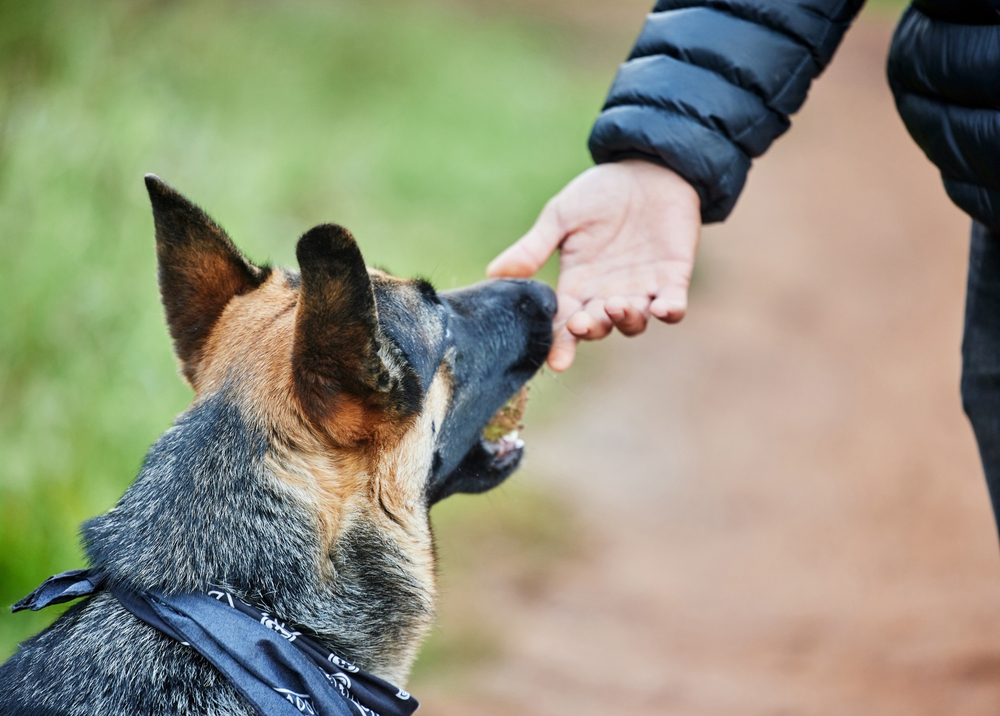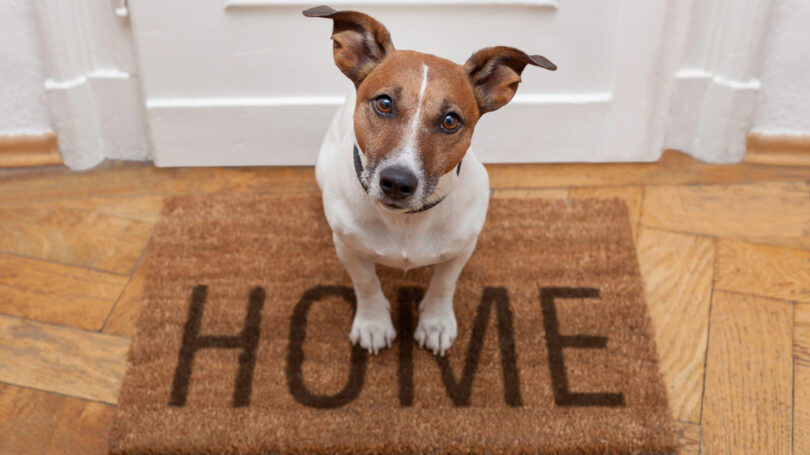The American Veterinary Medical Association (AVMA) sponsors National Dog Bite Awareness Week, which is dedicated to this pressing issue. But why? Isn’t man’s best friend supposed to be, well, friendly? The truth is that even the most good-natured dogs can have bad days. That’s why dog owners and the public must understand how to prevent dog bites and promote responsible pet ownership.
During National Dog Bite Awareness Week, we address the unseen dangers of dog bites and how to address this common but overlooked issue. Let’s explore what you need to know about prevention, statistics, and the critical dates of this national observance.
National Dog Bite Awareness Week: Importance and Goals
National Dog Bite Awareness Week aims to raise awareness about the serious issue of dog bites and their potential hazards. It serves as a platform to educate the public about:
- The importance of understanding dog behavior
- Taking necessary precautions to prevent bites
- The need to take aggressive dog behavior seriously
- Securing dogs properly
- The responsibility of every dog owner towards their pet and the community
Understanding the Statistics: Dog Bites in the United States
When we say that dog bites are a serious issue, we’re not exaggerating. An estimated 4.5 million people are bitten by dogs every year in the United States, and approximately 800,000 of those individuals seek medical attention. The most common injuries sustained from dog bites are puncture wounds and arm or hand injuries. However, dog bite cases have decreased in the U.S. from 1972 to 2011. Deaths from dog bites are rare, with a chance of one in 53,843.
Have you ever thought about the mail carrier who delivers your letters and packages? The United States Postal Service (USPS) is raising awareness about dog bite prevention. They have an excellent reason to be concerned. More than 5,400 postal employees were attacked by dogs in a recent year, emphasizing the need for the USPS’s proactive measures in promoting safety and awareness.
Mail service employees are at risk of dog attacks during mail delivery, as dogs often view them as intruders in their personal space. The USPS has taken significant steps to protect its employees and raise awareness about the importance of dog bite prevention. They are instrumental in driving initiatives that foster dog bite awareness in the community, making your mail delivery safer.
Dog Bite Legal Framework and Recourse in Nevada

In Nevada, the legal framework surrounding dog bite laws and the recourse available to victims is primarily governed by state statutes, local ordinances, and common law principles. Understanding these laws is essential for anyone involved in a dog bite incident, whether as the dog owner or the victim. Here’s an overview of the key aspects of Nevada’s legal landscape regarding dog bites:
1. Lack of a Specific Statewide Statute for Dog Bites
Nevada has no specific statewide statute that exclusively addresses dog bite liability. Instead, dog bite cases are generally handled under the principles of negligence and, in some jurisdictions within Nevada, under the “one-bite rule.”
2. The “One-Bite Rule”
In jurisdictions that follow the “one-bite rule,” a dog owner may not be held liable for the first bite or attack by their dog if they had no prior knowledge that the dog was dangerous or had the propensity to bite.
If a dog has never shown aggression or bitten someone, the owner might not be liable for the first incident. However, once a dog has exhibited dangerous behavior, the owner can be held liable for any subsequent incidents if it can be proven that they were aware of the dog’s destructive tendencies and did not take adequate precautions.
3. Negligence
In cases where the “one-bite rule” does not apply or in addition to it, a dog bite victim may pursue a claim based on negligence. To succeed in a negligence claim, the victim must prove that the dog owner failed to exercise reasonable care in controlling the dog or preventing the bite and that this failure resulted in the injury. This can include situations where the owner did not leash the dog in a public area where it is required or failed to secure their property adequately.
4. Strict Liability Ordinances
Some cities or counties in Nevada may have ordinances that impose strict liability on dog owners for bites or attacks, regardless of the dog’s previous behavior or the owner’s knowledge of such behavior. In areas with strict liability laws, an owner could be held liable for a dog bite even if it was the dog’s first incident and they had no reason to believe it was dangerous.
5. Criminal Penalties
Nevada law may impose criminal penalties on dog owners if their dog causes harm or death, especially if the dog is deemed dangerous or vicious according to local ordinances and the owner knowingly violated them.
6. Legal Recourse for Victims
Victims of dog bites in Nevada have several potential legal recourses:
- Personal Injury Claims: Victims can file a lawsuit against the dog owner to seek compensation for damages, including medical expenses, lost wages, and pain and suffering.
- Homeowner’s Insurance Claims: Many dog bite incidents are covered under the dog owner’s homeowner’s insurance policy, providing another avenue for compensation.
- Criminal Complaints: In cases of severe negligence or if a dog is deemed dangerous, victims can pursue criminal charges against the owner.
7. Time Limits for Filing Claims
It’s important to note that there are time limits for filing a legal claim in Nevada, known as the statute of limitations. For personal injury claims, including dog bites, the statute of limitations is typically two years from the date of the incident.
Preventing Dog Bites: Tips for Dog Owners
As a dog owner, you must ensure your pet doesn’t threaten others. But how can you prevent dog bites? Here are some strategies you can employ:
- Enforce generic dangerous dog laws
- Enforce leash laws
- Prohibit dog fighting
- Encourage neutering
- Participate in educational programs on pet care and bite prevention.on
Training your dog is also a crucial step. Introducing commands like ‘quiet’ can prevent your dog from acting aggressively when someone approaches their home. Establishing a routine that rewards dogs for exhibiting calm behavior during everyday events, such as mail delivery, can help prevent aggressive tendencies. Remember, even good dogs have bad days, and it’s up to us to ensure those bad days don’t turn into potential hazards.
Secure Your Dog During Mail Delivery
Securing your dog during mail delivery is one of the most effective ways to prevent dog bites. Not only does it keep your mail carrier safe, but it also protects your mail from being mauled. A wire cage around the letterbox or a dog gate across the hallway can reduce potentially aggressive reactions toward mail carriers.
An external mailbox away from the front door prevents dogs from seeing the mail carrier, which can mitigate aggressive reactions. Creating a secure area distant from the front door or mailbox when the mail is delivered can keep your dog from acting overly territorial upon the carrier’s arrival.
Recognize and Address Aggressive Dog Behavior
Recognizing aggressive dog behavior is the first step toward preventing dog bites. Dogs display aggression in various ways, including:
- Barking
- Snarling
- Baring teeth
- Avoiding eye contact
- Yawning
- Licking lips
- Pinning of the ears
- Crouching
- Stiffening
- Growling
- Snapping
- Biting
Understanding these signs can help pet owners manage their pets’ behavior effectively. Aggression in dogs can manifest due to various motivations, contexts, or targets, such as :
- Territorial
- Possessive
- Maternal
- Pain-related
- Predatory
- Frustration-induced
- Social conflict-related
- Disease-related
- Fear or anxiety-related aggression
To manage aggression, you can train your dog to retreat to a designated location and reward calm behavior to replace aggressive reactions. In some instances, treatment for aggressive behavior may involve behavior modifications, environmental changes, avoidance of known triggers, and, where necessary, medication.
Protecting Letter Carriers and Delivery Drivers

Dogs can threaten those who deliver our mail and packages. Over 5,300 postal workers were attacked by dogs in a recent year, with dogs often viewing mail carriers as intruders in their personal space. But don’t worry. Some steps can be taken to protect our mail carriers and delivery drivers.
Introducing your dog to the mail carrier in a controlled setting can help reduce fear and aggression towards them. Leaving a note with the dog’s name for the mail carrier and a treat for the dog can build a friendly relationship between them. Visual barriers like frosted windows or opaque fences can help reduce triggers of aggressive behavior toward mail carriers.
Utilizing Dog Alert Features and Warning Cards
The USPS has implemented a dog alert feature, the Dog Warning Card system, allowing mail carriers to flag addresses with aggressive dogs. These cards notify carriers of aggressive dogs at specific locations, which is crucial for the safety of carriers who may later service the same route.
In addition to Dog Warning Cards, carriers receive notifications about various hazards, including the presence of dogs, through their Mobile Delivery Device (MDD). This additional layer of information promotes their safety and helps them prepare for potential encounters with dogs during their route.
Encouraging Safe Mail Handling Practices
Safe mail handling practices are essential for preventing dog attacks, a common safety concern, especially when dealing with incoming mail. To ensure safe mail delivery and mail safety, carriers are encouraged to report any dog incidents or near misses to their supervisors to keep the USPS safety database up-to-date and to keep open communication with supervisors and colleagues about any encounters with aggressive dogs. By doing so, USPS employee safety is prioritized and upheld.
The USPS provides a Dog Attack Prevention program that includes the following measures:
- Arming mail carriers with dog-repellent
- Mandating the use of updated dog warning cards for known problematic locations
- Advising mail carriers to rattle gates before entering a yard to check for dogs
- Instructing mail carriers to avoid handing mail directly to customers if a dog is present, reducing the risk of provoking an attack.
These measures help ensure mail carriers’ safety when encountering dogs on their routes, as letter carriers deliver mail to countless homes daily.
Educating Children and Families on Dog Bite Prevention

Educating children and families on dog bite prevention is of utmost importance. After all, children are often the ones who are most at risk. Children in the one to four age group represent the highest percentage of fatal dog attack victims, emphasizing the urgency for targeted prevention education.
Mandatory public education on dog bite prevention should include both school-aged children and dog owners to ensure comprehensive safety measures. This helps reduce the number of dog bite incidents and fosters a culture of understanding and respect towards our canine friends.
Reminding Children of Proper Behavior Around Dogs
Reminding children of proper behavior around dogs is crucial to ensure a dog-secure environment. Teaching children to respect animal boundaries early on can prevent dangerous situations; reminding them that ‘tails are not for pulling’ helps them comprehend physical limits.
Children should also learn that squealing and running can provoke dogs. They should be taught to redirect unwanted behaviors, like offering a toy to a nipping puppy instead. Supervised, gentle, and respectful interaction with puppies can help develop comfortable and friendly dogs around young people.
Establishing Safe Boundaries for Dogs and Children
Creating safe play areas and maintaining open spaces can reduce stress and potential conflicts between dogs and children. Gates can effectively create safe play areas by separating children from dogs, with the gate’s height, attachment style, and strength tailored to prevent the dog from bypassing the barrier.
Tethers, secured leashes within a room, can be employed to allow a dog to share a space with a caregiver and child while limiting its radius of movement. This is ideal for scenarios where the child is not yet able to move around freely. In its absence, success stations are another management layer to ensure a safe environment.
By designing home layouts to minimize Grumble and Growl Zones, such as tight corridors or corners, open spaces can be maintained with separate play areas to reduce stress and potential conflicts between dogs and children.
Community Involvement in Dog Bite Prevention

Preventing dog bites isn’t just the responsibility of dog owners or postal workers – it’s a community effort. The AVMA utilizes the hashtag #PreventDogBites on social media platforms to foster community engagement in dog bite prevention conversations during National Dog Bite Awareness Week.
Involving the entire neighborhood can significantly decrease the number of dog bite incidents. The AVMA’s educational tools, such as clinic materials and ready-to-use social media posts, help spread crucial information on dog bite statistics and preventive measures.
Collaborating with Local Animal Shelters and Veterinarians
Collaborating with local animal shelters and veterinarians is crucial to community involvement in dog bite prevention. Implementing a multidisciplinary strategy that includes local animal shelters, veterinarians, and community members can significantly decrease the number of dog bite incidents.
These partnerships support the community by promoting responsible pet ownership. This is important for dogs’ well-being and appropriate training. They are instrumental in addressing the behavioral problems that can result in dog bites by focusing on repairing and strengthening the bond between humans and their canine companions.
Organizing Community Events for Bite Awareness Week
Hosting community events for National Dog Bite Awareness Week can raise awareness and educate the public about dog bite prevention. These events can be promoted on social media using the hashtag #dogbiteawareness, fostering a sense of unity and shared responsibility in preventing dog bites.
Legal Support for the National Nevada Dog Bite Awareness Week
It’s important to remember that even the most well-behaved dogs can have moments of stress or fear that could lead to unexpected behavior. Recognizing this, we must all contribute to preventing such moments from escalating into dangerous situations. Ensuring the safety and well-being of both our canine companions and the community requires patience, understanding, and proactive measures.
For those seeking further guidance or needing legal from a dog bite lawyer, Temple Injury Law is here to help. Our team is committed to providing the support and expertise necessary to navigate the aftermath of such incidents for your rights and well-being. Schedule a consultation with us. Let’s commit to taking the necessary steps to prevent dog bites, making our communities safer for everyone involved.

Jeff Temple focuses his practice in the area of personal injury. As a skilled personal injury attorney, he handles a broad range of cases including motor vehicle accidents, premises liability, and wrongful death. He is a graduate of the Radford University, he later attended the University of Miami School of Law and studied abroad at University College London. Upon graduating, Jeff relocated to Las Vegas and founded Temple Injury Law in 2022.

